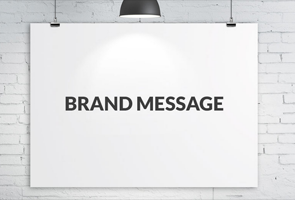Your brand message is made of three major components: your content, your content delivery strategy, and your target audience. If any of these things are out of alignment, your message will not have the reach that it could.
So how do you earn the applause? Remember applause in this analogy equals engagement and, ultimately, profit. For your content strategy to properly deliver your brand message, it needs to align well with the overall brand image and reflect the goals of your company or organization.
If you want your target demo to take notice, you need to be certain that you are generating content that is congruent with your message. Anything less will ultimately undermine the reputation of your brand. Here are three things you can do to facilitate a standing ovation for your content and clearly communicate your brand message.
1. “Know Thyself”
It’s more than just an ancient aphorism. It’s important in life, and it’s important in business. You should know your brand and know it well. The more thought you put into all the nuances, the more focused your brand message will ultimately be.
In a previous article, I showed you how to approach visual content from the perspective of the senses. In terms of your overall brand, it goes even further. If your brand were a person, what would it look like? You might want to develop an ideal avatar that represents the embodiment of your brand message. This will be different from an ideal customer avatar, but the two should complement each other. Your customer and your brand should form a good “marriage” of likes, dislikes, thoughts, and ideas.
2. Consider Your Customers’ Brand Experience
I’ve said it before, but it bears repeating: For every single piece of content you produce, from custom images to custom writing to curated content and stock media, a conscious decision needs to be reached as to how well all of it aligns with your brand message. Create a convoluted message, and that will be the audience perception of your brand.
You need to figure out precisely how to speak to your audience through all of your content. Look at every part of your website, every social media post, everything you put in front of your audience with scrutiny. No, there is no such thing as a perfect marketing strategy, but you certainly can keep from making obvious and avoidable mistakes. Hurling a mishmash of content at your audience because, “they’ll probably like it,” is a recipe for failure. Ask yourself: “Whywould they like it,” and better, “How will this content make them like us?” You accomplish the latter in three ways:
• By making people feel smart – interacting with your brand is a wise decision.
• By facilitating conversation – your brand is worth talking about, particularly on social media.
• By establishing trust – your brand is accurately represented in your content.
3. Promise Solutions for Problems and Meet People’s Needs
Your content needs to fill voids in your customers’ lives. Subsequently, your brand message needs to be one that promises that will happen if they stick around. Don’t ask questions; make statements. Tell people that they have needs that are going unfulfilled, then offer to fulfill them.
When deciding what brands they are going to interact with and the content they are going to consume, people always think first about themselves. “How will it make me feel?” “How will it help me?” “How will it make my life happier or easier?”
Here’s the conundrum – what matters most to your audience is almost never what matters most to your company. In fact, sometimes these things can be at direct odds with one another. The trick is figuring out how to make the two peacefully co-exist. This is accomplished through reciprocity: Give them what they want, and they will reciprocate by giving you their business, clicking on your ads, or responding to whatever clear call to action you put in front of them.
If you can manage to do these three things successfully, you will make huge strides toward reinforcing your brand message with your target audience. You will also build a solid rapport with them over time that moves them fluidly through your sales funnel, taking them from prospects to customers to loyal customers long-term.
